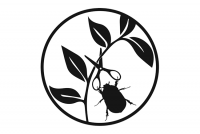Weed Biocontrol Issue 90

In this issue

PRISMSS Invigorates Pacific Weed Biocontrol
Invasive species are the leading driver of biodiversity loss in the Pacific, negatively affecting ecosystem resilience, ecosystem services, and future ability to adapt to climate change. In the past the major gap in invasive species management in the Pacific has been adequate, on-the-ground operational action. Now a new initiative has been launched by the Secretariat of the Pacific Regional Environment Programme (SPREP) to address this gap.

Yellow Flag Iris: Beauty Turned Beast
Yellow flag iris (Iris pseudacorus) is a robust, perennial, semi-aquatic iris species with attractive yellow flowers that was once favoured as an ornamental garden plant. However, it is now an unwanted organism under the New Zealand Biosecurity Act 1993, and is listed in the National Plant Pest Accord, prohibiting its sale and distribution.

Booting Aquatics with Biocontrol
New Zealand has a serious problem with invasive alien aquatic weeds, including rooted, submerged macrophytes such as lagarosiphon (Lagarosiphon major), hornwort (Ceratophyllum demersum) and Brazilian waterweed (Egeria densa).

Melissa Kirk’s PhD Work
We are delighted to introduce a PhD student, Melissa Kirk, who is registered at Auckland University and is based both at the university and at our Tamaki office. Melissa is originally from England and moved to New Zealand when she was 12 years old. She has since lived in Christchurch, Blenheim and Dunedin, and is currently living in Auckland. Melissa’s PhD study is investigating the co-evolution of plants and insects in exotic ecosystems in order to gain a better understanding of the successes, and the risks, associated with weed biocontrol programmes.

Summer Activities
Summer is a busy time for many biocontrol agents, so you might need to schedule the following activities.

